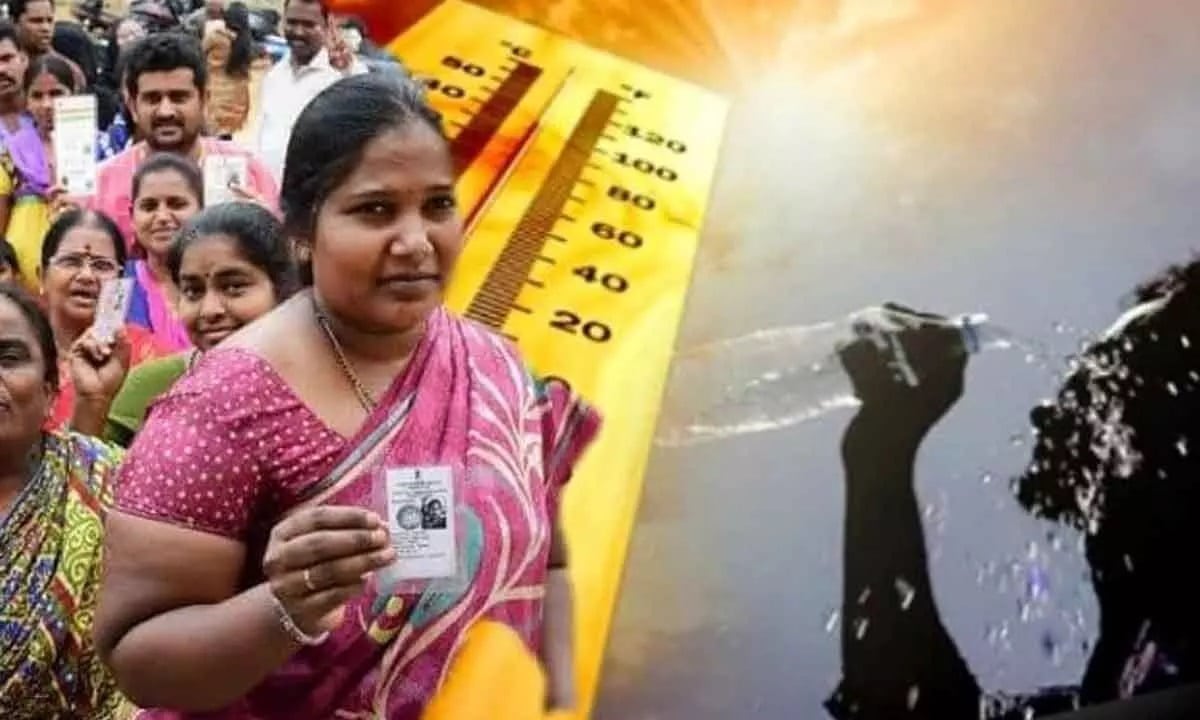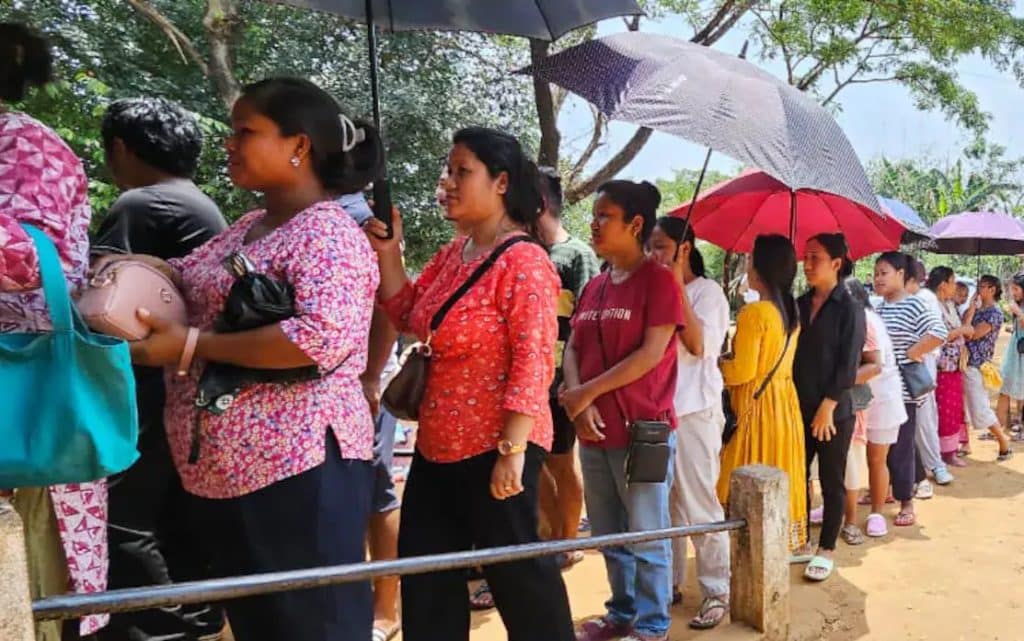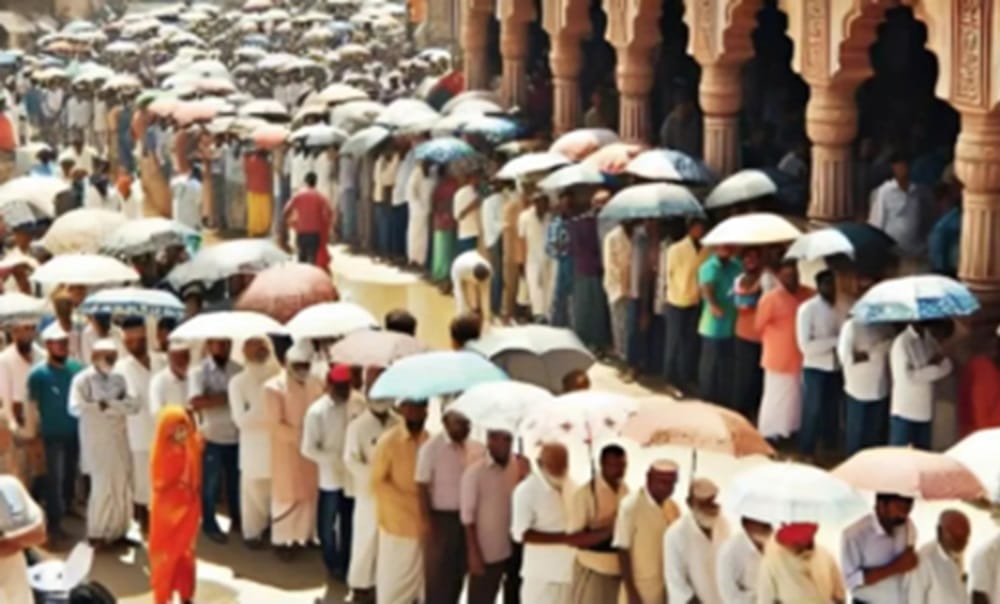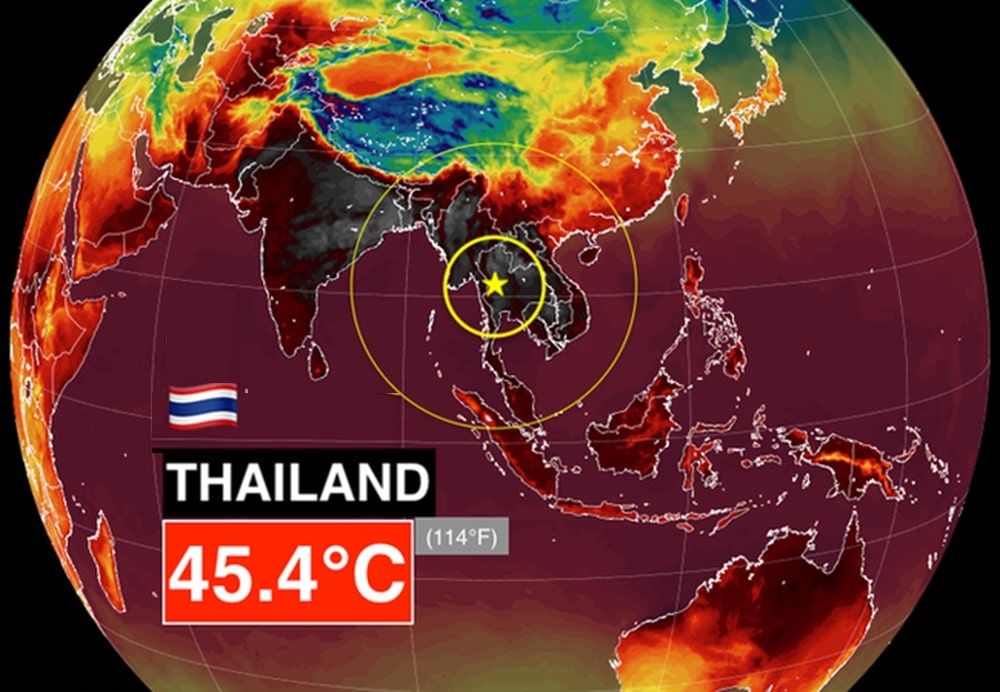Election News
Indians Cue in Sweltering Heat to Vote in the World’s Largest Election

Indian voters are braving sweltering heat to vote in the world’s largest election, as a severe heat wave strikes sections of the country and authorities predict a hotter-than-normal summer for the South Asian nation.
According to the India Meteorological Department (IMD), a heat wave will continue to strike regions of south and east India till the end of the week, including four states voting on Friday.
Parts of West Bengal, Bihar, Uttar Pradesh, and Karnataka are among the 13 states and union territories voting in the second phase of India’s massive elections, with temperatures expected to reach 40 degrees Celsius in some regions.
According to the IMD, Baripada in the eastern state of Odisha reached 43.6 degrees Celsius on Thursday, while Khammam in Telangana reached 43.4 degrees Celsius. The IMD warned last month that India would likely experience larger and longer heat waves this year due to above-normal temperatures.
Gandhi Ray, a 60-year-old farmer from eastern Bihar, said he lives in a small hut in the forest and plans to go to a nearby hamlet to vote.
According to the IMD, temperatures will exceed 41 degrees Celsius every day until May 1 in his homeland of Banka district.
“It’s important for me to vote but definitely every day this heat is getting worse and worse,” he was quoted as saying by CNN. “I generally work outside, so I’m used to it, but as I get older, it’s more difficult to cope. Now my children have taken up the majority of the work.”
Worlds Biggest Election

Lok Sabha Elections 2024 Phase 2 Polling: AFP Image
High temperatures have sparked worry during election season, as outdoor political events draw thousands of people under the scorching heat. The issue was highlighted Wednesday when a politician fell from heat while addressing supporters in western Maharashtra.
The Election Commission, National Disaster Management Authority, and IMD organized a task group to reduce the impact of heat waves ahead of polling days, and Prime Minister Narendra Modi presided over a conference earlier this month to assess the country’s readiness for the hot season.
The Election Commission has issued instructions for remaining cool at polling locations, which include drinking water and bringing an umbrella, as well as warning against leaving children or pets in parked automobiles.
In Bihar, election officials have extended voting hours at several polling sites “in view (of the) prevailing heat wave.” Ray said the heat won’t deter him from voting on Friday.
“This is the one right we have so of course I will vote, everyone should vote for whomever they want to represent them,” he added.
“Of course it would be good if the election took place in a cooler time but whether I go to vote or not, I am still going to feel hot so that’s not going to stop me.”
Cuing in India’s Sweltering Heat to Vote

Indians Cue in Sweltering Heat to Vote in the World’s Largest Election: Image Times of India
Despite the heat warnings, the Election Commission stated that there are “no major concerns for heat waves” during Friday’s polling, and weather projections predict “normal conditions” for the constituencies voting.
India, the world’s most populous country with 1.4 billion inhabitants, frequently endures heat waves in the summer months of April, May, and June.
Last year, multiple heat waves struck India, closing schools, destroying crops, and putting a strain on energy supplies. In June alone, temperatures in some sections of the country reached 47 degrees Celsius, killing at least 44 people and afflicting hundreds with heat-related ailments.
Extreme heat has already had an impact on the region this year, with hundreds of millions of people living in climate-vulnerable areas seeing no reprieve from punishing heat and humidity.
According to scientist Maximiliano Herrera, neighboring Bangladesh is experiencing a heat wave this week, with temperatures above 40 degrees Celsius in numerous regions and no break from record hot nights. On Thursday, the government proclaimed a “heat alert” across the country, which will last 72 hours.
Extreme temperatures are also rising across Southeast Asia, with local media reporting dozens of heatstroke deaths in Thailand, hundreds of school closures in the Philippines, and droughts drying up rice fields and waterways in Vietnam’s Mekong Delta “rice bowl” region.
Heatwave Thailand

Heatwave-Thailand: CTN News Image
Thailand’s Meteorologist Department issued further warnings about extremely hot weather over the weekend, and the health department stated that heatstroke had already killed at least 32 people.
Bangkok municipal officials issued an excessive heat warning, forecasting that the temperature would top 44 degrees Celsius. Temperatures in Thailand’s capital reached 43 degrees Celsius on Friday, with similar highs forecast next week.
Bangkok’s environment department issued a warning that the heat index was “extremely dangerous”.
A wave of extremely hot weather has hammered South and Southeast Asia this week, forcing schools to close and worshippers to pray for rain. Authorities in northern Thailand’s Udon Thani province have also warned of high temperatures throughout the weekend.
Temperatures in several provinces are expected to reach record highs of 43 to 45 degrees Celsius. Thailand’s health ministry said late Friday that 32 people have died from heatstroke this year, compared to 37 in all of 2023.
Direk Khampaen, deputy director-general of Thailand’s Department of Disease Control, said officials advised the elderly and those with underlying medical conditions, such as obesity, to stay indoors and drink plenty of water.
According to Save the Children, Vietnam’s weeks-long heat wave has prompted three provinces to declare a state of emergency as salt seeps into fresh water sources, limiting access to drinking water for over 70,000 households.
According to a report released Tuesday by the World Meteorological Organization, Asia will remain the world’s most disaster-prone region in 2023, and the region is warming faster than the worldwide average.
Source: CNN































